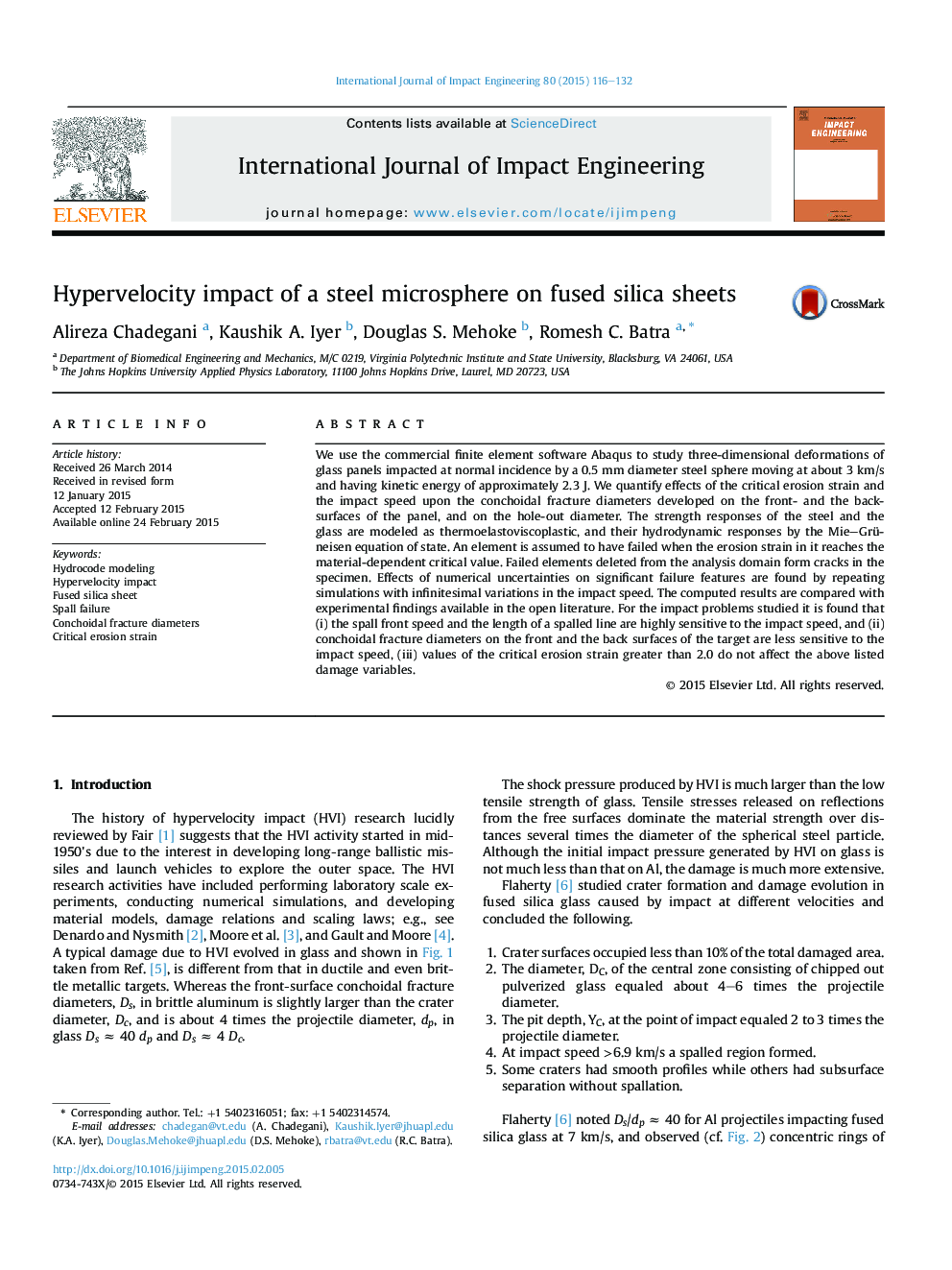| Article ID | Journal | Published Year | Pages | File Type |
|---|---|---|---|---|
| 7173159 | International Journal of Impact Engineering | 2015 | 17 Pages |
Abstract
We use the commercial finite element software Abaqus to study three-dimensional deformations of glass panels impacted at normal incidence by a 0.5Â mm diameter steel sphere moving at about 3Â km/s and having kinetic energy of approximately 2.3Â J. We quantify effects of the critical erosion strain and the impact speed upon the conchoidal fracture diameters developed on the front- and the back-surfaces of the panel, and on the hole-out diameter. The strength responses of the steel and the glass are modeled as thermoelastoviscoplastic, and their hydrodynamic responses by the Mie-Grüneisen equation of state. An element is assumed to have failed when the erosion strain in it reaches the material-dependent critical value. Failed elements deleted from the analysis domain form cracks in the specimen. Effects of numerical uncertainties on significant failure features are found by repeating simulations with infinitesimal variations in the impact speed. The computed results are compared with experimental findings available in the open literature. For the impact problems studied it is found that (i) the spall front speed and the length of a spalled line are highly sensitive to the impact speed, and (ii) conchoidal fracture diameters on the front and the back surfaces of the target are less sensitive to the impact speed, (iii) values of the critical erosion strain greater than 2.0 do not affect the above listed damage variables.
Related Topics
Physical Sciences and Engineering
Engineering
Mechanical Engineering
Authors
Alireza Chadegani, Kaushik A. Iyer, Douglas S. Mehoke, Romesh C. Batra,
